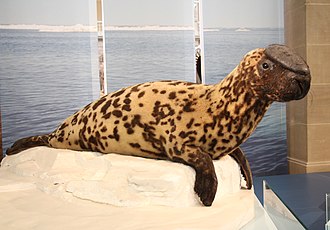Found in the Northern Atlantic, they are found from Svalbard in the east to the Gulf of St Laurence in the west.

They are known for the skin on their head, which is called a hood – males can inflate this during mating to impress the females.
Generally living on drift ice in the arctic ocean and the North Atlantic. Highly migratory, they have been recorded increasingly far south in recent decades, including France and Portugal, with several strandings in Spain. No-one has yet identified the reason for these increasingly long migrations – but as similar distances have been recorded in the USA, it is clearly a reason that effects much of the population. Before 1940 they were hunted widely, but only subsistence hunting occurs these days, and it is thought that provided nothing else is threatening the population it can manage this level of human predation.
With the increased population, 10,000 are culled each year, to keep the population under control
There are 4 known places that they breed, and generally live 30-35 years.
The North-west Atlantic population has been roughly stable over the last 60 years, but unfortunately the North-east Atlantic population has dropped 85-90% over the last 60 years.
